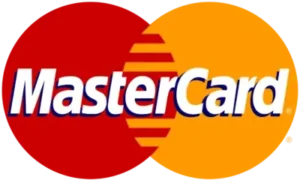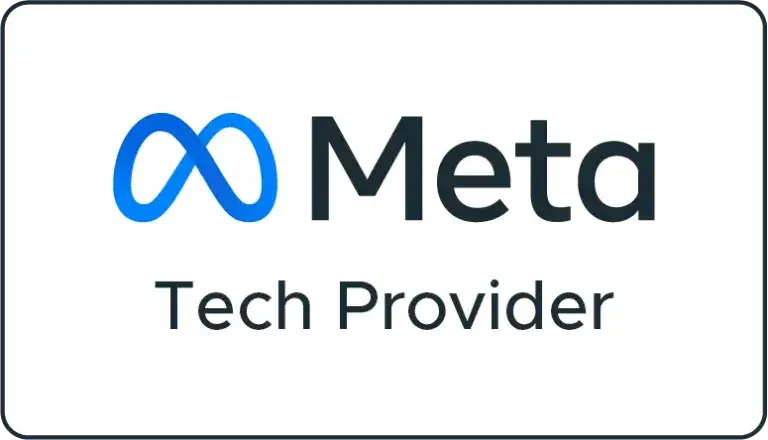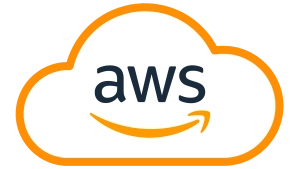Introduction

Do you realize that an average user spends almost three hours a day on social media? This is a staggering fact that underlines the great impact digital platforms have on people’s lives. Having been defined as interactive computer-mediated technologies that allow the creation and sharing of information and ideas among people in virtual communities and networks, social media has rapidly grown from a novelty to an integral part of our daily lives.
From fledgling efforts like SixDegrees and Friendster, innovation in social media has transformed communication industries and brought a new digital, overall connectivity to the world. A force that now demands our attention, adaptation, and strategy in its navigation.
Thesis: Social media has innovated communication, reshaped industries, and created a new digital era that requires adaptation and strategic navigation.
Rise of Social Media: A Paradigm Shift
Social media no doubt presented a paradigm shift in communication that changed the way people communicate, garner information, and engage with the world. A little intro is below:
Before the Internet:
Social media can trace its precursory roots as far back as 1844, to the telegraph machine, when Samuel Morse sent the first electronic message from Baltimore to Washington, D.C.
However, the modern origins are more rightly associated with the advent of the ARPANET in 1969, which paved the way for the Internet and social media we know today.
Evolution and Impact
Social media has undergone several changes from direct electronic exchange of information to a virtual meeting place to eventually even a retail platform.
It has touched the lives of billions of people cutting across all socio-demographic boundaries and binding us together across the globe.
Businesses have moved in to occupy this space in the wake of digital consumers’ habits and have incorporated the use of social media in business, marketing, and consumer engagement.
Marketing Transformation
Social media is now an essential tool for 21st–century marketing.
Marketers have employed it for purposes such as reaching consumers, creating awareness of their brands and engaging them in meaningful ways.
This has been a dramatic change from one-way traditional forms of communication to interactive engagements.
The Beginnings of Social Media
Six Degrees 1997:Six Degrees introduced online social networking in 1997. Users could create profiles and befriend each other, giving early roots to modern platforms.
Friendster (2002): Started in 2002 by Friendster, this was almost the pioneer of the genre.
The site introduced user profiles, befriended others, and shared personal content.
Myspace (2003): Myspace then emerged as a highly customizable platform for music, blogging, and networking purposes. In Myspace, users can create personalized profiles, share music playlists, and find friends.
Shift Towards User-Generated Content:
These early platforms were oriented towards the participation of users, which encouraged the creation of content. The one-way communication was shifted to interactive engagements, redefining the mode of connecting and sharing information.
Social media evolved as vibrant platforms for creativity, self-expression, and community building.
The Rise of Social Media Giants:
The concept of Social Media, in its present sense, began taking shape somewhere in the early 2000s. MySpace was founded in about 2004, and it achieved a million monthly active users first. It really set the stage for other sites that followed.
The dominance of Facebook:
Having an amazing display of 2.3 billion users, Facebook is still the most used social media across the world. The runner-ups include YouTube, Instagram, and WeChat—all with a user base of more than a billion.
Exponential Growth and Global Reach
Digitalization has changed communication patterns and has brought people together across borders. No longer an innovation, social media has become part of our daily routine. We share moments, opinions, and experiences; we shape our identity online.
Impact of Social Media on Communication
Democratization of Information Sharing
Everybody Has a Say: Thrashing Traditional Media Barriers Social media democratized information sharing. While the conventional media model is strongly controlled by the gatekeepers, social platforms allow anybody to share their views. This kind of inclusion empowers people, giving voice to a diversity of voices and views.
Citizen Journalism and Alternate Viewpoints
Social media was the birthplace of citizen journalism—a grassroots approach to news reporting. Ordinary people capture events, share eyewitness accounts, and challenge mainstream narratives. Alternative perspectives come to the fore, enriching public discourse.
The Power of Virality and Fast News Travel
Virality is the superpower of social media. One tweet or video does the job of reaching every part of the world in a few minutes. News, be it correct or ill-informed, travels fast. The speed demands critical thinking and fact-checking.
Increased Engagement and Interactivity Amongst Users
Social media moved from broadcast one-way to dynamic interaction. The users engage with, comment, and share content. The brands respond to the customers’ queries within record time. It’s a conversation, not a monologue.
Real-time Conversation and Feedback
Twitter’s character limit prompts concise, real-time conversations. Brands respond to complaints within a snap. Celebrities engage directly with their fans. Feedback loops are shorter and shape content and products.
Significance of Active Listening and Community Management
Successful social media managers have to do much more than just listen; they will energetically monitor trends, show empathy in response, and manage online communities. This creates a process of trust by actually engaging and understanding the community.
The Evolution of Language and Culture
Social media gave life to an entire dictionary full of abbreviations, emojis, and slang. Memes—humorous images or videos—convey cultural references. Language changes very fast, reflecting the subcultures online.
Impact on Social Movements and Cultural Trends
Hashtags mobilize social movements (#MeToo, #BlackLivesMatter). Cultural trends are born, like VSCO girls and TikTok dances. Social media is the motor that drives the norms, values, and aesthetics.
The Case for Responsible Communication and Digital Citizenship
With great power comes great responsibility. Users should be aware of—and realize how to navigate—misinformation, cyberbullying, and privacy concerns. Digital citizenship is tilted toward ethical performance online.
Social Media and Its Influence on Industries

Social Media Marketing as a Dominant Strategy
Social media marketing has become an intrinsic part of business growth. With 4.9 billion users worldwide on social networks, it gives brands a platform to engage with both current and potential customers. Not to mention, it is not a random posting. It is actually strategic in nature. Brands design content calendars that include a mix of text, images, videos, stories, etc., such that it helps them project themselves in a positive light before their desired audience.
Targeted Advertising and Influencer Marketing
Data-driven targeted advertising: It helps reach the relevant audience through demographic, interest, and behavioral targeting. Influencer marketing is the act of a brand collaborating with an influencer to promote a product or service. Importance of Building Brand Communities
A brand community comprises a group of people who are emotionally invested in the brand and can interact with one another and the brand as a whole. Such communities comprise a group of followers who actually engage with content, share products, and connect with like-minded people. This way, having a strong brand community is useful to a business in product feedback, testing new ideas, and building brand loyalty.
Social Commerce and E-Commerce Integration
These social media platforms have evolved to act as marketplaces and places for shopping. Blurring the distinction between shopping and social interaction, Social Commerce allows for in-app purchases. This also means enormous influencer marketing because influencers demonstrate goods to their followers.
Impact on Customer Service
Social media gives the brand a direct channel to communicate with the customer. Companies can address and resolve issues and quickly respond to customers. Responsiveness in customer service is a critical component of managing one’s reputation.
Making Sense of the New Digital Frontier: Complexities and Opportunities
Misinformation and Fake News: Why Critical Thinking is Needed Much of the information travels so fast in social media that even misinformation and fake news are created and accelerated. It becomes, therefore, important to develop critical thinking skills in analyzing which sources are credible and which ones are not. Fact-checking and verifying before sharing are essential practices.
Cyberbullying, Privacy Concerns, and Online Safety Social media platforms can be used for harassment, cyberbullying, or even privacy violations. The risks that users open themselves up to are vast, from their personal data and online security to their mental well-being. Settings in privacy options should be well-guarded, and some amount of good behavior needs to be inculcated.
Social Media Addiction and Consequences on Mental Health: Excessive usage of social media leads to addiction, and addiction has a lot of side effects on mental health. Constant validation, FOMO (fear of missing out), and social comparison may provide a seedbed for anxiety, depression, and feelings of inadequacy.
Social Media Opportunities
Build Meaningful Connections and Online Communities: Social media can be used to connect with people across boundaries, thus crossing the barrier of distance. Such a medium establishes relationships and reunites old friends. Also, it creates newer communities of interest-based affiliations. These connections could blossom into emotional support and personal growth.
Social Learning Opportunities and Educational Resources: The social media platforms make available educational content, tutorials, and courses. These can be utilized in learning new skills, as an academic resource and as a forum for discussion with experts. Lifelong learning has become easier to access through these mediums.
Social Media for Activism and Positive Social Change
Social media amplifies voices and facilitates activism. It is through online platforms that the #BlackLivesMatter movement, the #MeToo movement, and awareness of climate change are born. In these online platforms, intense advocacy, fundraising, and awareness campaigns are churned out.
If the platform is used intelligently, one can network, establish expertise, and get job opportunities from places like LinkedIn. Not forgetting that social media acts as a virtual resume for people as it enables them to build their personal brand and connects them with peers across the industry.
Conclusion
The Revolution of Social Media: Key Points
Global Connectivity and Communication: Social media has brought people together without any geographical barriers. Instant communication, updates, and virtual interactions define this era.
Evolved Marketing and Advertising: Brands leverage social media for focused marketing, influencer Tie-ups, and Brand Communities. The channels are effectively used to enhance visibility, engagement, and customer reach.
Effects on Customer Service: Social media acts as a one-way channel for customers’ inquiries, feedback, and also reputation management. Responsive, empathetic customer service is important for brand image.
Strategic Use of Social Media
Define Clear Objectives: Understand what your goals are: brand awareness, lead generation, or community building. Align your social media efforts with the greater business goals.
Understand Your Audience: Research the preferences, demographics, and behaviors of your audience. Create content catering to their interests and needs.
Content Matters: Create relevant and valuable content: articles, videos, infographics, and stories. Consistency and authenticity drive trust and engagement.
Use The Right Platforms: Labour over the platforms that matter most to your audience. This may be Facebook, Instagram, LinkedIn, Twitter, TikTok, and so on. Each platform has special features and demographic users.
Coping With the Evolving Landscape: Fast-moving, sometimes unpredictable, social media requires staying updated with the latest trends, algorithm changes, and feature updates. Adjust your strategy accordingly.
Metrics Monitoring: Keep tabs on engagement, reach, conversion rates, and customer feedback. Adjust tactics based on the insights.
Balancing Automation and Personalization: Use scheduling tools but maintain a personal touch in interactions. Response to messages and comments should be prompt.













